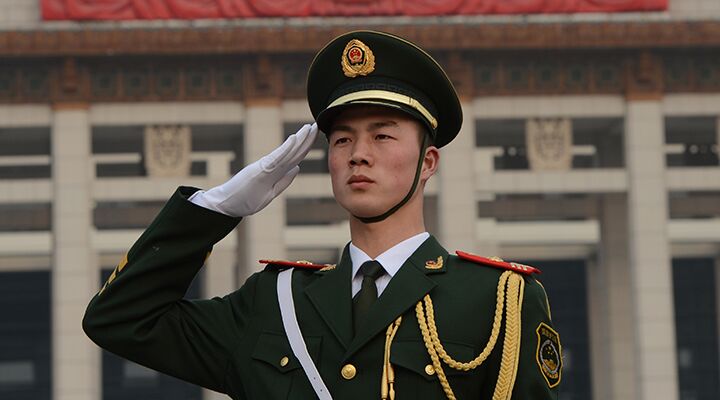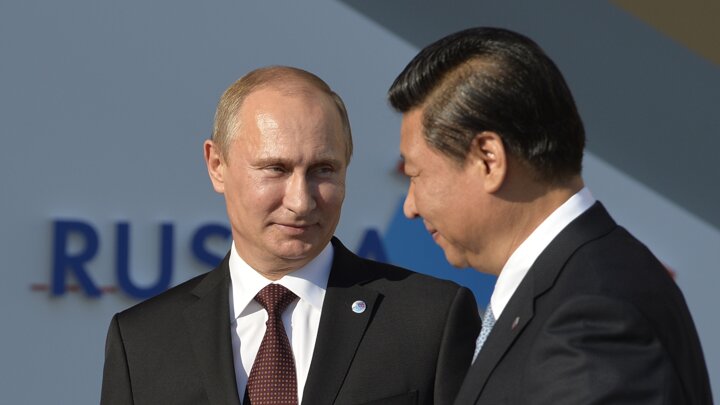
Asian Military Cooperation on the Rise
Despite the hype regarding America’s “pivot to Asia,” the nations of the East see that United States’ military power is becoming ever more hollow. They see America’s populace war-weary, its policymakers almost comically disunited, and its president power-thirsty at home but deliberately weak internationally.
As the hollowness of America’s power becomes more evident, and as U.S. dominance in the Asia-Pacific erodes, many Asian countries are re-balancing and re-aligning. From Moscow to Beijing, from Tokyo to Delhi, they are adjusting to the new reality. The adjustment is most apparent in the increased military cooperation between eastern powers.
Russia and China
As the West has sought to isolate Moscow over the ongoing Ukrainian crisis, Russia and China have entered into a new era of unprecedented military cooperation.
Back in May, Russia and China held their first-ever joint naval exercises near some Japanese-administered islands that lie at the heart of a China-Japan territory dispute. The location—in the backyard of America’s strongest Asian ally—was not arbitrary.
Then, from August 24 to 29, more than 7,000 troops from Russia, China and three central Asian nations—Kazakhstan, Kyrgyzstan and Tajikistan—assembled for the largest joint military drill ever held by the Shanghai Cooperation Organization (sco). Besides infantry and special forces, the international drills also included battle tanks, radio-electronic warfare systems, air defense units and aviation. All together, 70 aircraft of 19 different types, both manned and unmanned, participated in the exercises.
According to the sco, the massive drills were to prepare soldiers to protect from potential terrorist strikes the economic “Silk Road” that will pass through central Asia from China to Europe. But as Matthew Sussex, head of international relations at the University of Tasmania, pointed out, “It is kind of rare to have an anti-terrorist mission which uses battle tanks. It says: ‘We are trying to exercise together to coordinate our troops to meet any potential eventuality.’” This “any” includes open war.
Another part of the new golden age of Russia-China military cooperation has been a sudden willingness on Moscow’s part to share cutting-edge military technology with the Chinese. A key example of this came in late March when Russian President Vladimir Putin agreed to sell the S-400 Triumf, a new generation anti-aircraft weapons system, to China. Once the deal is finalized, China will be the first foreign nation to use the sophisticated Russian weaponry.
Russia tested the S-400 on August 19 in joint military drills it held with forces from Belarus, Kazakhstan, Kyrgyzstan and Tajikistan. A Defense Ministry spokesman was quoted by Reuters as saying the move was designed to show Russian military power as fighting rages in nearby Ukraine.
Japan and India
Japan and India are increasingly aware of America’s eroding influence in Asia, and increasingly wary of China’s rise. Both are impressed by the power and boldness of Vladimir Putin’s Russia, but also anxious about its ever steeper tilt toward Beijing.
The answer for each, at least in the short term, may be each other.
On September 1, Tokyo signed a historic deal with India entering into the first-ever India-Japan defense cooperation agreement. The deal marked a historical change in Asian geopolitics: the first time post-war Japan entered such an agreement outside its three traditional alliance partners—the United States, the United Kingdom and Australia.
Back in July, Japanese Prime Minister Shinzo Abe succeeded in changing Japan’s interpretation of its post-World War ii Constitution which had previously limited Japan’s military to strict self-defense inside its immediate territory. The new interpretation allows for “collective self-defense”—allowing Japan to use force to defend its allies under attack. It was this constitutional change that created the opportunity for Japan to enter into a broader array of defense agreements, such as this new landmark India-Japan deal.
India is also closer than ever to gaining Japanese backing for a nuclear energy pact, and the two are expected to soon strike an important deal to jointly produce mixed rare earths.
Back in January, the Trumpet said Japan, spooked by the unreliability of American security promises and by China’s increasingly belligerent behavior, may start leaning more toward India: “Maybe Tokyo would be able to persuade nations like South Korea, Taiwan or India to form an alliance with Japan to counter the China-Russia axis” (“Czars and Emperors”).
The new defense deal shows that Japan could already be working toward such an alliance.

Japan also appears to be nearing a breakthrough in its relations with South Korea. India has also been strengthening its defense ties with Indonesia, the Philippines, Singapore, Myanmar and Vietnam.
As the thinness of the American paper tiger becomes ever more evident, and as Russia and China continue to become more powerful and more aggressive, the Asian nations will increasingly work toward shoring up defense ties with each other.
Some, like Japan and South Korea, appear to be digging their heels in, working to build alliances that will protect them from the Moscow-Beijing axis. Most though are preparing themselves to be allied with or dominated by the Russo-Chinese axis. Among the countries taking this approach are Kazakhstan, Kyrgyzstan, Tajikistan, Uzbekistan, Mongolia and possibly Vietnam. Some, such as India, seem to be making preparations for either outcome.
Bible prophecy indicates that, regardless of which category a given nation currently falls into, almost all will eventually be in the second camp—joined together as a gargantuan power bloc, with Russia and China at the helm. To understand more, read Russia and China in Prophecy.
